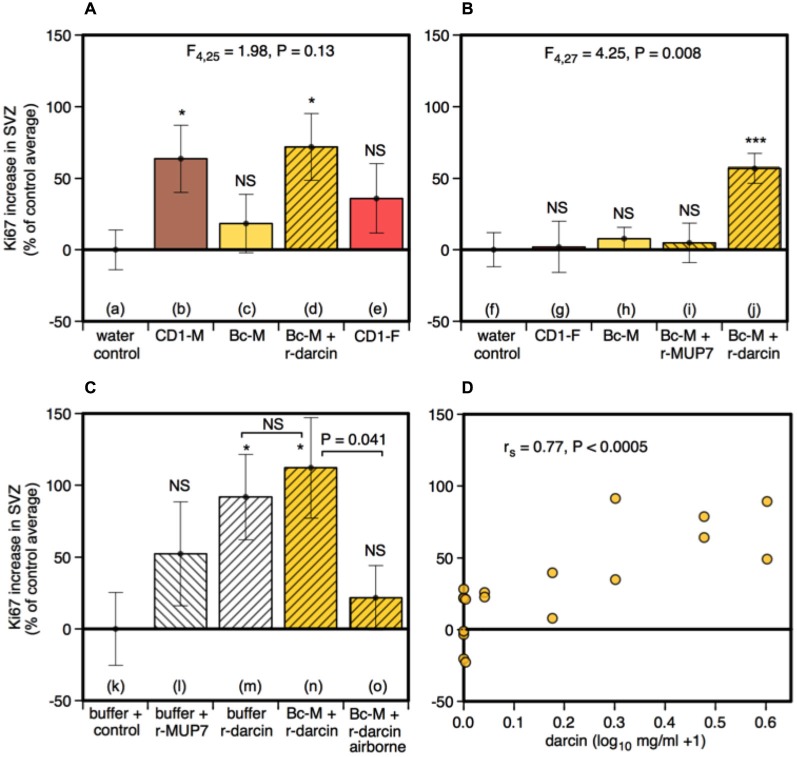Figure 4.
Effect of the darcin pheromone on cell proliferation in the SVZ of female mice. Increase in Ki67-positive cell counts in females exposed to treatment scents for 7 days in their home cages (mean ± sem, n = 6 per treatment group), expressed as a percentage of the control treatment average for that experiment (A,B) water; (C) recombinant buffer; (D) BALB/c male urine). Females had full contact with urine stimuli (A: b–e, B: g–j, C: n), 1 μg/μl recombinant darcin or MUP7 control (C: l, m); a mixture of 1 μg/μl recombinant MUP and urine with full contact (A: d, B: i, j, C: n) or with access to airborne odor only (C: o). CD1-M: CD-1 male urine; Bc-M: BALB/c male urine; CD1-F: CD-1 female urine. ANOVA analyses established differences between treatments within each experiment (A,B) parametric, (C) non-parametric), with planned comparisons of greater responses to scent treatments than to the control group (*P < 0.05, **P < 0.01, ***P < 0.005, ****P < 0.001). Relationship between contact with different concentrations of darcin added to BALB/c male urine (n = 6 females at 0 μg/μl, n = 2 females at 0.01, 0.1, 0.5, 1, 2, 3 μg/μl) and Ki67-positive cell count assessed using Spearman rank correlation (D).

